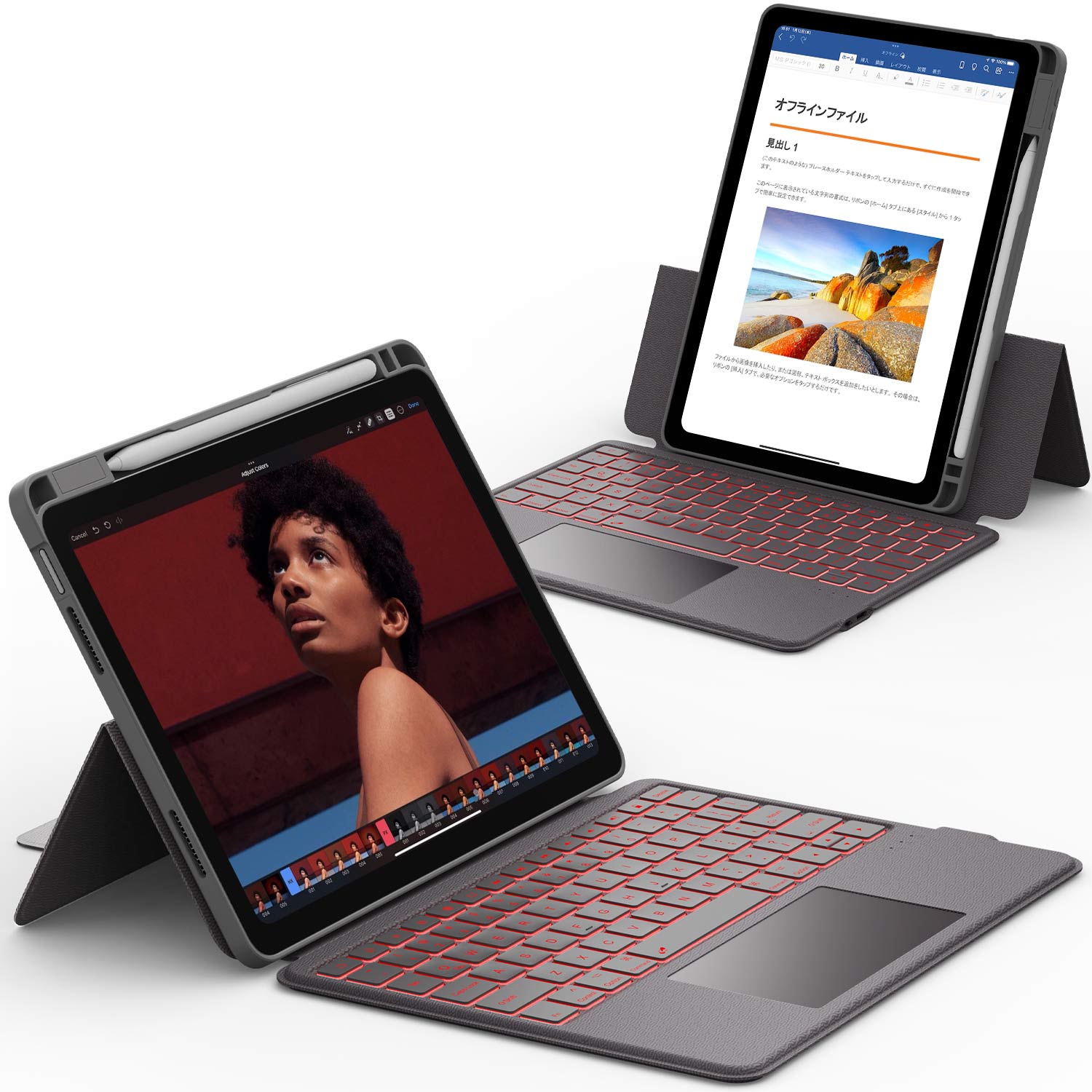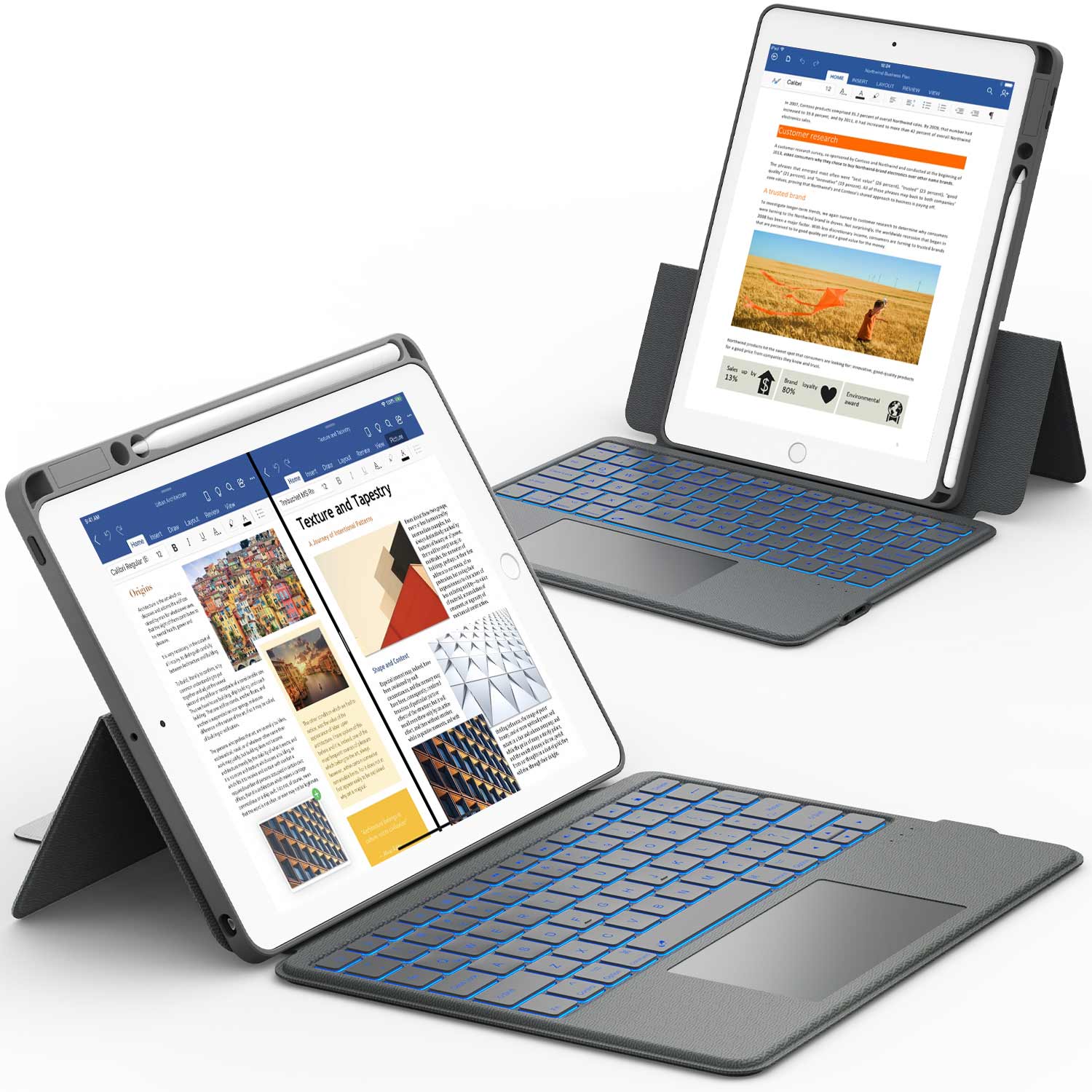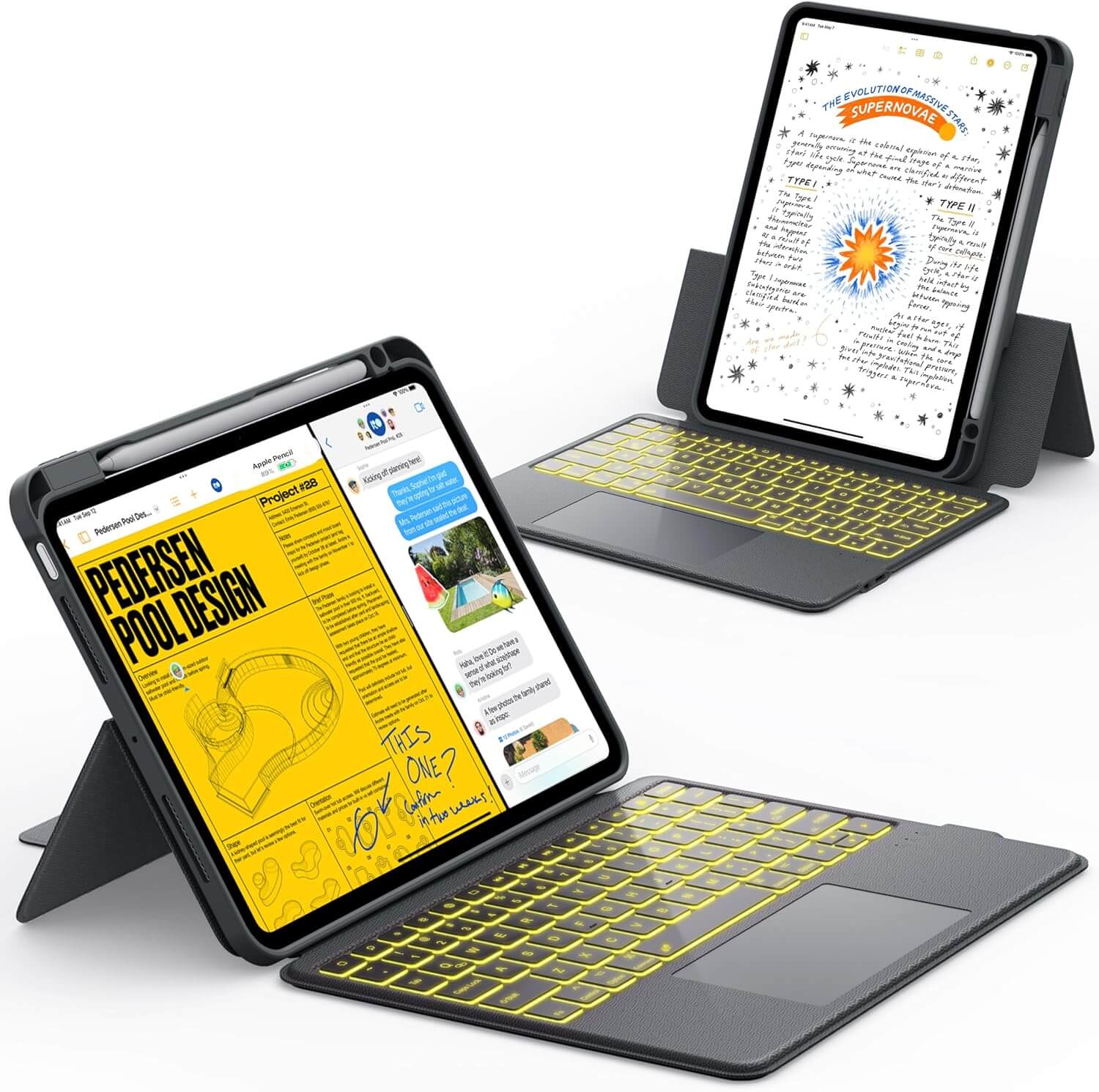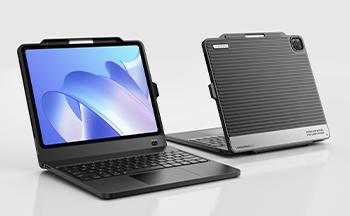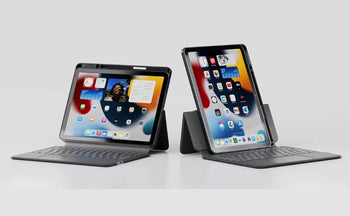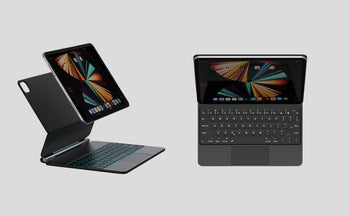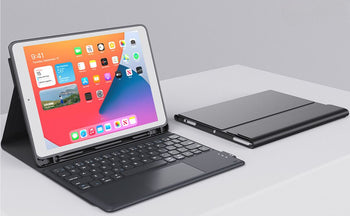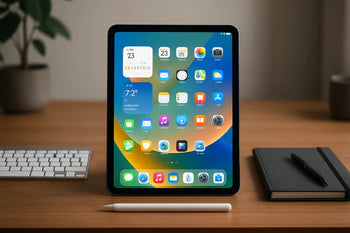Do I need a screen protector if I have a case? While your case does a great job protecting the back and sides of your iPad, it leaves the screen exposed to daily dangers.
A lot of things could scratch your screen. Keys in your pocket, tiny dust particles, or even your fingernails! Cases with raised edges help, but a screen protector gives that extra shield your expensive device deserves.
The best part? Screen protectors are way cheaper than fixing a cracked screen! Keep reading to learn why using both is your best bet!
What Cases Protect Against And What They Don't

A case primarily protects your iPad's body and edges from damage.
When you drop your iPad, the case absorbs most of the impact, preventing dents and cracks on the back and sides.
Cases with raised edges also keep your screen from touching surfaces when placed face-down.
Defender cases offer even better protection. They usually have multiple layers and rubber bumpers that can handle serious drops. These tough cases protect your buttons and ports too. However, cases can't fully protect your screen from direct hits.
If something hard hits your screen directly, the case won't help much. Cases also don't stop tiny scratches from keys or sand in your pocket.
Remember that no case is 100% drop-proof. Even the best ones have limits!
Common Screen Damage Despite Using Cases
Screens often get damaged even when iPads have cases. The most common problem is spider-web cracks from corner drops. This happens when your iPad lands at just the right angle where the case can't absorb all the impact.
Scratches from hard objects like keys or sand are another common issue. Your case doesn't cover the screen surface, so these tiny particles can still cause damage.
Many people also see small cracks appear near the edges of their screens. This might happen when the pressure from a fall focuses on one spot.
Pocket damage is surprisingly common too. Placing your iPad in the same bag as coins or keys can lead to screen scratches over time.
Some users notice their screens crack without any obvious drops. This might be from pressure when putting the iPad in the back part of your bag.
Benefits Of Adding A Screen Protector
Screen protectors offer important advantages beyond what a case alone can provide. They work together with your case to give your iPad complete protection.
Additional Protection Against Scratches And Impacts
A screen protector acts as your iPad's first line of defense against everyday hazards. Keys in your bag, sand at the beach, or even fingernails can scratch your iPad screen.
Tempered glass screen protectors are especially good at preventing these scratches. They're harder than plastic screen protectors and feel more like your actual screen.
When you drop your iPad, a tempered glass protector can absorb impact energy that might otherwise crack your screen.
Think of it as a sacrificial layer - it's better for your $10 screen protector to crack than your expensive iPad display!
Plastic screen protectors are thinner and more flexible. They provide good scratch protection at a lower cost, though they don't offer as much impact protection as tempered glass.
While you're considering both a case and screen protector for optimal protection, why not get extra functionality too? Browse Chesona's iPad cases with stand collection to discover protective cases that shield your device while propping it up at the perfect angle.
When You Might Skip The Screen Protector

While cases offer good protection for your iPad, there are situations where you might choose to use only a case without a screen protector.
The decision depends on your iPad's built-in screen durability and how you typically use your device.
Modern Screen Durability Considerations
Today's iPads come with significantly improved glass compared to earlier models. While Apple doesn't specifically use Gorilla Glass (they use custom Corning glass made to their specifications), the screens on modern iPads offer impressive scratch resistance.
iPad Pro, iPad Air, and newer standard iPad models feature strengthened glass that can handle everyday wear much better than previous generations. These screens include oleophobic coatings that resist fingerprints and smudges, making them easier to keep clean.
Apple doesn't make specific drop-height claims about their screens, but independent testing shows modern iPad glass can withstand minor impacts. However, the large screen surface area still makes iPads vulnerable to damage from direct falls.
If you have an iPad made in the last two years, its screen is certainly more durable than older models, but the glass remains one of the most vulnerable components. Most users still benefit from using a screen protector, especially considering the high replacement costs for iPad screens.
Low-Risk Usage Patterns
You might skip the screen protector if you're careful with your iPad.
Do you always keep your iPad in a dedicated bag with nothing else? This reduces scratch risks from keys and coins.
People who rarely drop their iPads may not need the extra layer. If you don't take your iPad to places with sand or grit, your screen faces fewer scratch hazards.
Some folks don't like how screen protectors feel or look. They can reduce touch sensitivity or add a slight glare to your display.
If your case has a raised edge (or "lip") around the screen, it provides basic protection when placed face-down.
Remember that a good case with shock absorption might be enough if you're gentle with your device.
Now that your device is fully protected with a case and screen protector, fill it with amazing software! Don't miss our article: Best iPad Apps To Enhance Your Digital Experience to maximize what you can do with your well-protected tablet.
Screen Protector and Case Compatibility
When using both a screen protector and case together, you need to make sure they work well with each other to provide the best protection for your iPad.
Finding The Right Combination For Your iPad
Not all screen protectors and cases work well together, especially with some iPads that have different screen shapes.
Some cases might push up against the edges of your glass screen protector, causing it to lift or crack.
When shopping, look for "case-friendly" screen protectors that are designed to leave a small gap around the edges.
These work much better with protective cases that have raised lips.
If possible, buy your case and screen protector from the same company since they often design them to work together.
For the best results, check online reviews where other users share which combinations work well for your specific iPad model.
Installation And Maintenance Tips
Proper installation makes a huge difference in how well your screen protector and case work together.
Always clean your screen thoroughly before applying any adhesive or tempered glass.
Follow these steps for the best results:
- Install your screen protector first, before putting on your case
- Wait about 24 hours after applying the screen protector before adding your case
- Use the included alignment tools that come with quality screen protectors
If you notice bubbles forming after installing both, it might mean your case is pressing against the edges.
You may need to adjust the position or try a different combination. Dust can get trapped between your case and screen protector over time.
Remove your case occasionally to clean both items with a microfiber cloth. This helps maintain good adhesion and keeps everything looking clear
Where To Get High-Quality Cases for Your iPad

Chesona stands out with superior quality and smart design features most competitors miss. Here’s why:
Unmatched Versatility
Chesona's iPad cases with stands offer stable viewing angles (110°-130°) perfect for streaming, video calls, or typing without frustrating collapses.
Perfect Fit Guarantee
Find exact matches for every iPad model including 12.9" iPad Pro cases and 10.5" iPad cases with precise cutouts and stain-resistant finishes.
Smart Accessories Integration
Artists love Chesona's iPad cases with pencil holders featuring secure magnetic attachments instead of flimsy elastic loops.
Superior Value Proposition
Protect your investment with Chesona's 9.7" iPad cases offering military-grade protection at reasonable prices – far cheaper than screen repairs or device replacement.
Chesona delivers the protection, functionality, and style that serious iPad users demand, making them the smart choice for anyone who values their device.
Final Thoughts
When it comes to protecting your iPad, using both a case and screen protector gives you the best defense against everyday accidents. Cases shield your iPad from drops and bumps, while screen protectors guard against scratches that can make your screen look old and worn out fast.
Think of it like wearing both a helmet and knee pads when biking - sure, you could use just one, but why take the risk? For just a few extra dollars, you can keep your iPad looking new and working perfectly.
And speaking of perfect protection, iPad users should check also out Chesona's heavy-duty iPad cases for drop protection or their iPad cases with keyboards for the ultimate combination of protection and productivity. Your future self (and wallet) will thank you when your device still looks great months or even years from now!
With your iPad safely guarded by both a case and screen protector, you're ready to be productive! Dive into our article, Top 10 iPad Apps to Enhance Your Productivity to transform your protected device into a work powerhouse.
Frequently Asked Questions
Does a case with a built-in screen protector offer enough protection?
A case with a built-in screen protector can be a good all-in-one solution. These cases usually have a plastic film that covers your screen.
The built-in protectors are often thinner than separate glass screen protectors. They might not guard against heavy impacts as well.
Some users find that these built-in protectors reduce touch sensitivity. They can also trap dust between the protector and screen over time.
Is it better to have a screen protector in addition to a case, or is the case sufficient?
Using both a case and a separate screen protector gives you the most complete protection. A case mainly protects the back and sides from drops. Your screen remains vulnerable to scratches from keys, coins, and sand.
A tempered glass screen protector shields against these daily hazards. If you're careful with your iPad and rarely drop it, a good case might be enough.
But adding a screen protector is cheap insurance against costly screen repairs.
Should I consider a privacy screen protector for my device even if it's in a case?
Privacy screen protectors are worth thinking about if you often use your iPad in public places. They make your screen visible only to someone looking directly at it. These protectors help keep nosy people from seeing your texts, emails, or banking info.
A case won't provide this privacy benefit.
Privacy protectors may slightly reduce screen brightness. You'll need to decide if the privacy trade-off is worth it for your needs.
What are the advantages of using a tempered glass screen protector versus relying solely on a case?
Tempered glass protectors feel more like your actual screen compared to plastic ones. They're smoother to touch and don't affect image quality much.
These protectors can absorb impact and crack instead of your actual screen. Think of them as a sacrificial layer that can save you hundreds in repair costs.
Glass protectors resist scratches better than plastic. They don't yellow over time. They're usually just $10-15. This makes them a smart investment for any iPad.
